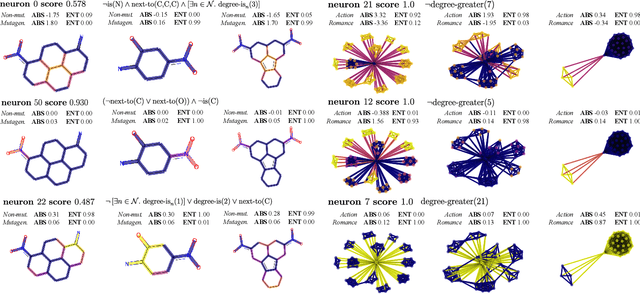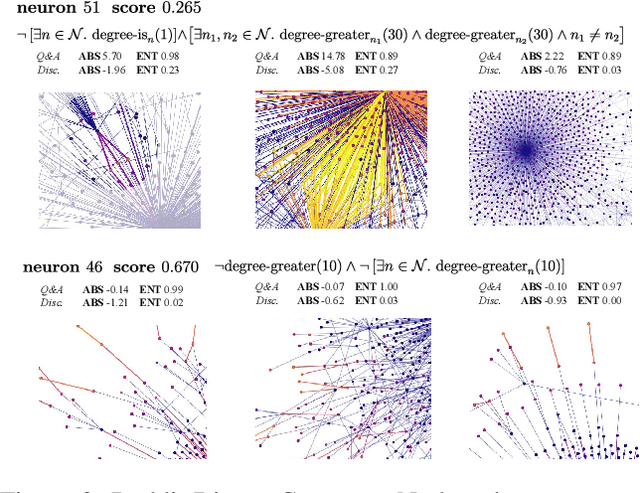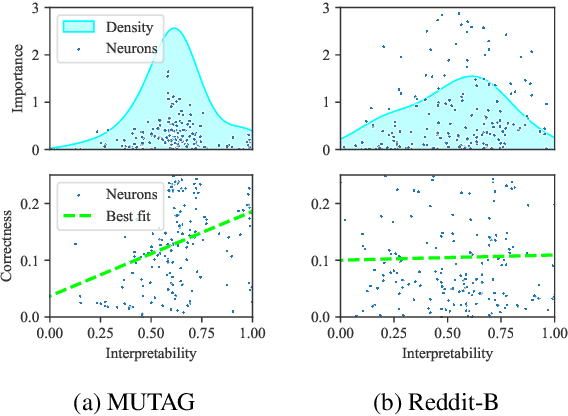Han Xuanyuan
Global Concept-Based Interpretability for Graph Neural Networks via Neuron Analysis
Aug 22, 2022



Abstract:Graph neural networks (GNNs) are highly effective on a variety of graph-related tasks; however, they lack interpretability and transparency. Current explainability approaches are typically local and treat GNNs as black-boxes. They do not look inside the model, inhibiting human trust in the model and explanations. Motivated by the ability of neurons to detect high-level semantic concepts in vision models, we perform a novel analysis on the behaviour of individual GNN neurons to answer questions about GNN interpretability, and propose new metrics for evaluating the interpretability of GNN neurons. We propose a novel approach for producing global explanations for GNNs using neuron-level concepts to enable practitioners to have a high-level view of the model. Specifically, (i) to the best of our knowledge, this is the first work which shows that GNN neurons act as concept detectors and have strong alignment with concepts formulated as logical compositions of node degree and neighbourhood properties; (ii) we quantitatively assess the importance of detected concepts, and identify a trade-off between training duration and neuron-level interpretability; (iii) we demonstrate that our global explainability approach has advantages over the current state-of-the-art -- we can disentangle the explanation into individual interpretable concepts backed by logical descriptions, which reduces potential for bias and improves user-friendliness.
Efficient Representations for Privacy-Preserving Inference
Oct 15, 2021



Abstract:Deep neural networks have a wide range of applications across multiple domains such as computer vision and medicine. In many cases, the input of a model at inference time can consist of sensitive user data, which raises questions concerning the levels of privacy and trust guaranteed by such services. Much existing work has leveraged homomorphic encryption (HE) schemes that enable computation on encrypted data to achieve private inference for multi-layer perceptrons and CNNs. An early work along this direction was CryptoNets, which takes 250 seconds for one MNIST inference. The main limitation of such approaches is that of compute, which is due to the costly nature of the NTT (number theoretic transform)operations that constitute HE operations. Others have proposed the use of model pruning and efficient data representations to reduce the number of HE operations required. In this paper, we focus on improving upon existing work by proposing changes to the representations of intermediate tensors during CNN inference. We construct and evaluate private CNNs on the MNIST and CIFAR-10 datasets, and achieve over a two-fold reduction in the number of operations used for inferences of the CryptoNets architecture.
 Add to Chrome
Add to Chrome Add to Firefox
Add to Firefox Add to Edge
Add to Edge